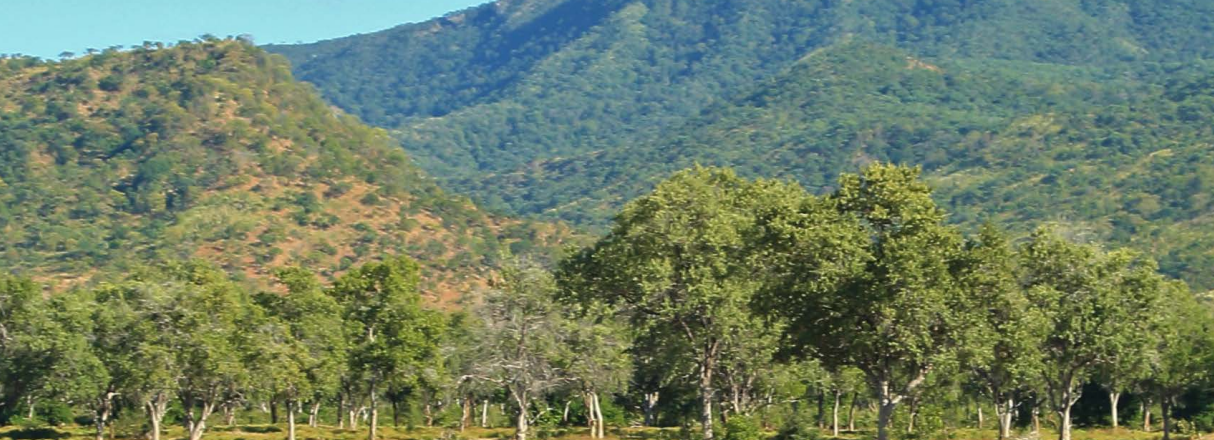Introduction
The United States Agency for International Development (USAID) has funded sustainable landscapes (SL) programming for almost 14 years. Emerging from the Copenhagen Commitment for Tropical Forests in 2009, sustainable landscapes funds are earmarked by the US government to help slow, halt or reverse greenhouse gas (GHG) emissions from land use worldwide, largely focused on forest conservation, restoration, and management. This has amounted to more than half a billion dollars mobilized for forests to date. Yet sustainable landscapes programming does not exist in a vacuum; sustainable landscapes objectives overlap with other key areas of USAID interest, including resilient agriculture systems, food security, good governance, and poverty alleviation. Thus, SL emission reduction goals must be achieved while ensuring that interventions do not create or reinforce exclusionary governance regimes or increase the economic vulnerability of the rural poor who often live adjacent to or within forested areas. Land and resource governance systems (LRG) determine who has access to natural resources, how and when they can be used, and who can make decisions over how resources are managed. A country’s LRG system may constrain or facilitate achievement of GHG reduction goals, and interventions that strengthen land tenure and resource rights can unlock mitigation opportunities and align incentives towards sustainable land use.
With respect to constraints, weak governance of natural resources at the national, regional, or local level may make it difficult for local stakeholders to effectively manage or protect forest resources against extractive interests and land use change. Stakeholder groups may be excluded from participation by law, for example, if they are not recognized as rightsholders, or by traditional practices, for example the exclusion of women in forest management decision-making bodies. SL interventions may introduce new property rights for government and communities to consider; for example, forest carbon presents a new bundle of rights and responsibilities associated with emission reductions, trade, and benefits, where ownership and benefit streams are not yet clearly defined in legislative frameworks. Without sufficient attention to who has rights over commitments and decisions, and whether actors are incentivized to change behavior, programs cannot be expected to have lasting or structural influence. Many national legal frameworks dating back to colonial times are based on state control of forest resources and lack rights recognition for Indigenous Peoples and local communities (IPLC). A failure to consider these constraints presents risks that USAID programs will either not achieve scalable impact, or that they will reinforce systems that center decision-making and power in existing inequitable institutions.
Interventions that secure land tenure and resource rights can unlock private sector investment and align stakeholder incentives for communities and individuals to adopt practices that support reduced GHG emissions and increased carbon sequestration by forests. Land tenure and property rights interventions further provide opportunities to resolve long-standing boundary conflicts and address historical grievances among stakeholders, which are often based on rights over resources. Investments that increase awareness of rights, or help stakeholders clarify rights, are essential to promote locally legitimate governance solutions. Indeed, almost all SL programs deploy LRG interventions, such as mapping community natural resource boundaries, capacity building training for community resource governance bodies, land use planning, or in a few cases, legal/regulatory reform efforts. This often includes working with IPLC communities to both clarify their rights and support their ability to manage and protect forest resources.
Yet even as programs recognize LRG constraints and identify potential interventions, there may be a reluctance to engage, as LRG issues are often perceived as intractable and may risk opening up political issues that have no clear solution on a donor-driven timeframe. USAID programs may be fearful of being sidetracked into these political and cultural battles that may take decades to resolve. In some cases, program design may not be well informed by LRG constraints and opportunities, as a land governance regime may be perceived as established and not open to amendment. However, there are approaches to integrate LRG interventions, either as a design element from the beginning of the work or as part of an adaptive management approach after identifying the above constraints.
Within this context and given USAID’s existing investment in and continued commitment to forest protection and management, it is important to take stock of how LRG has been addressed in USAID SL programs. This paper thus examines how LRG issues have appeared in sustainable landscapes projects, looking at the LRG constraints and interventions that have contributed positively or negatively to successful program design and implementation. The paper encourages programs to identify local level interventions that support or strengthen national level land tenure and property rights. The analysis highlights examples, case studies, and recommendations to integrate LRG considerations more effectively for better SL outcomes.


